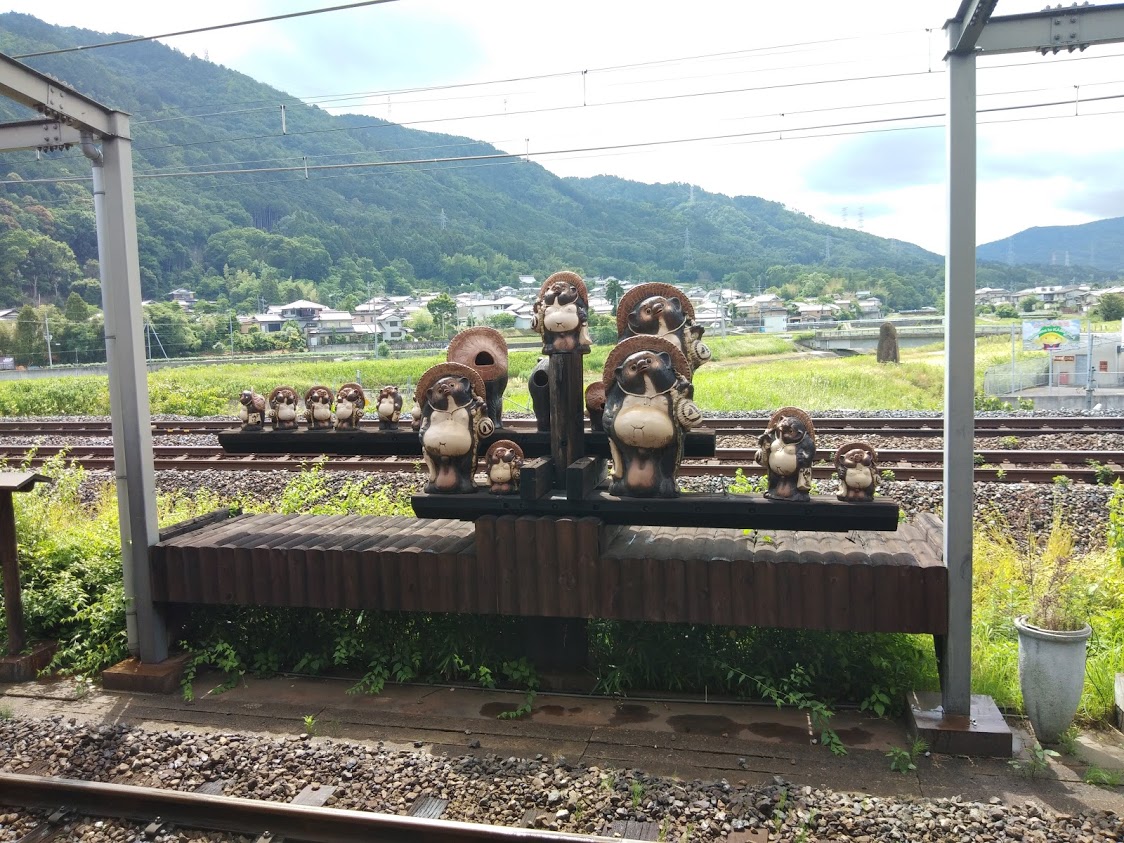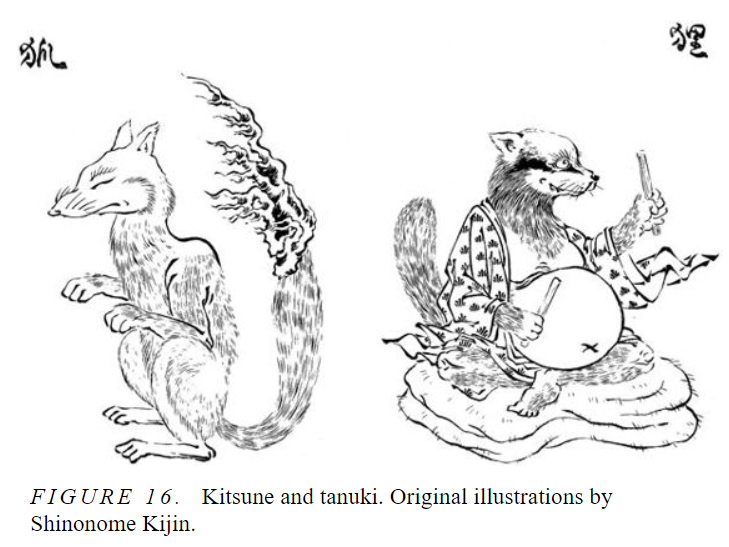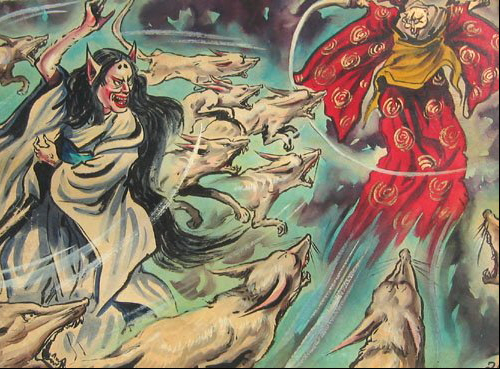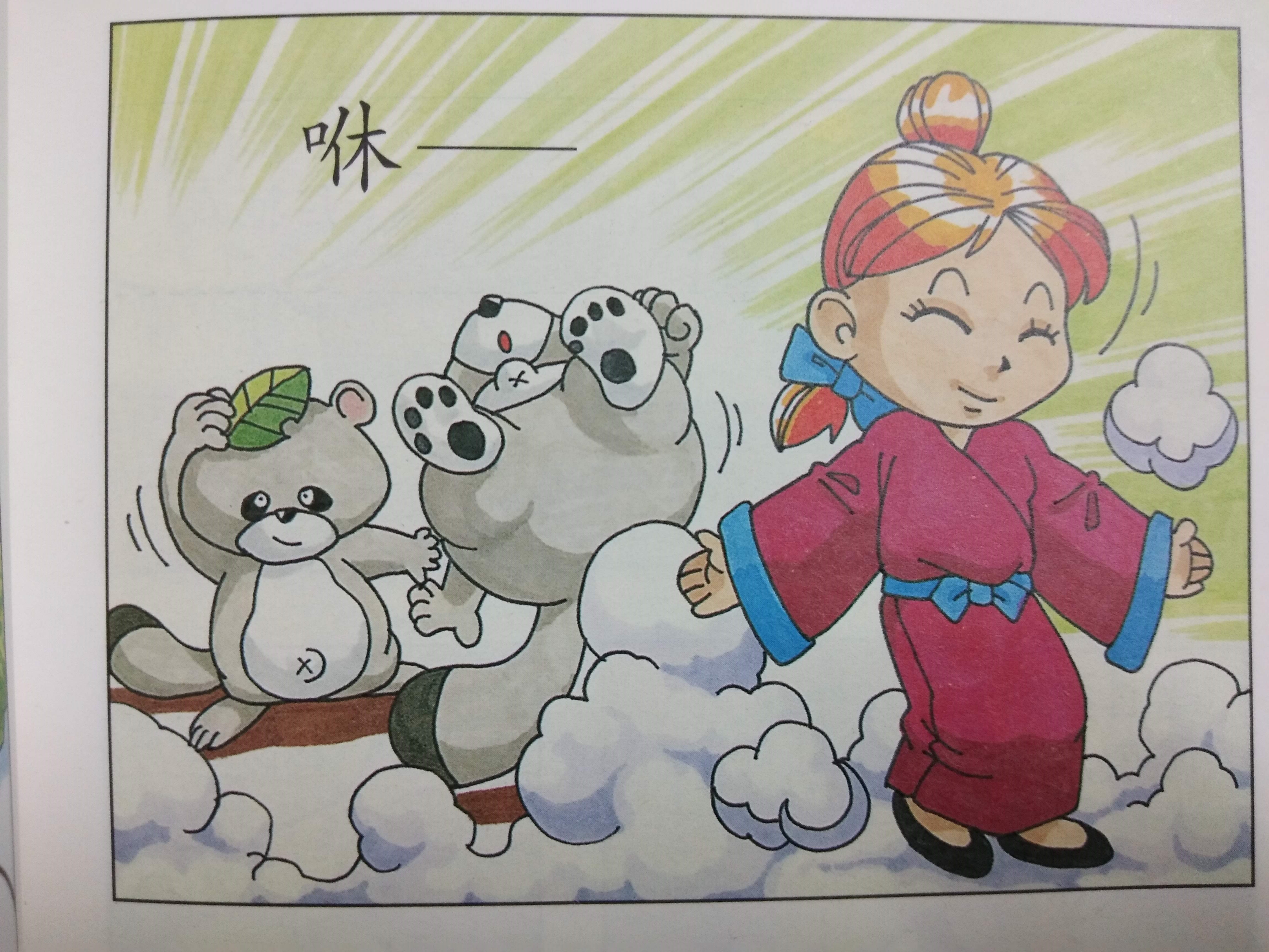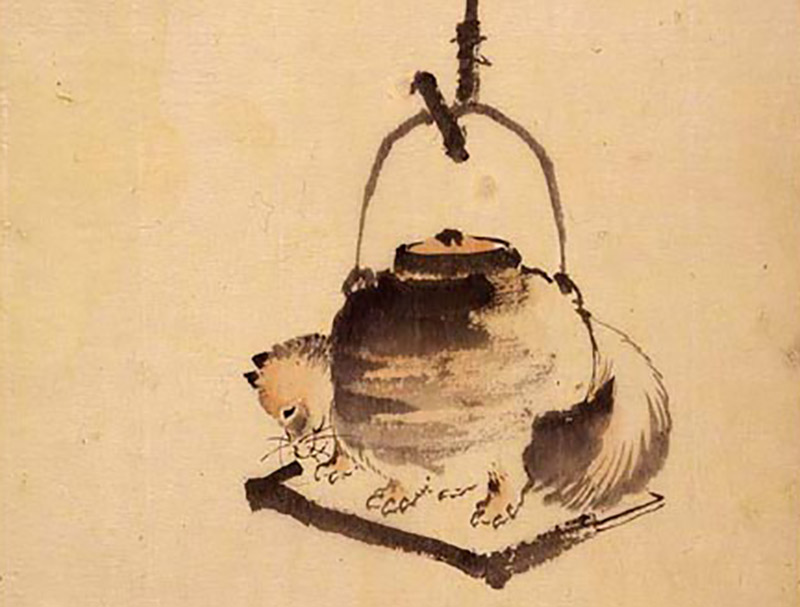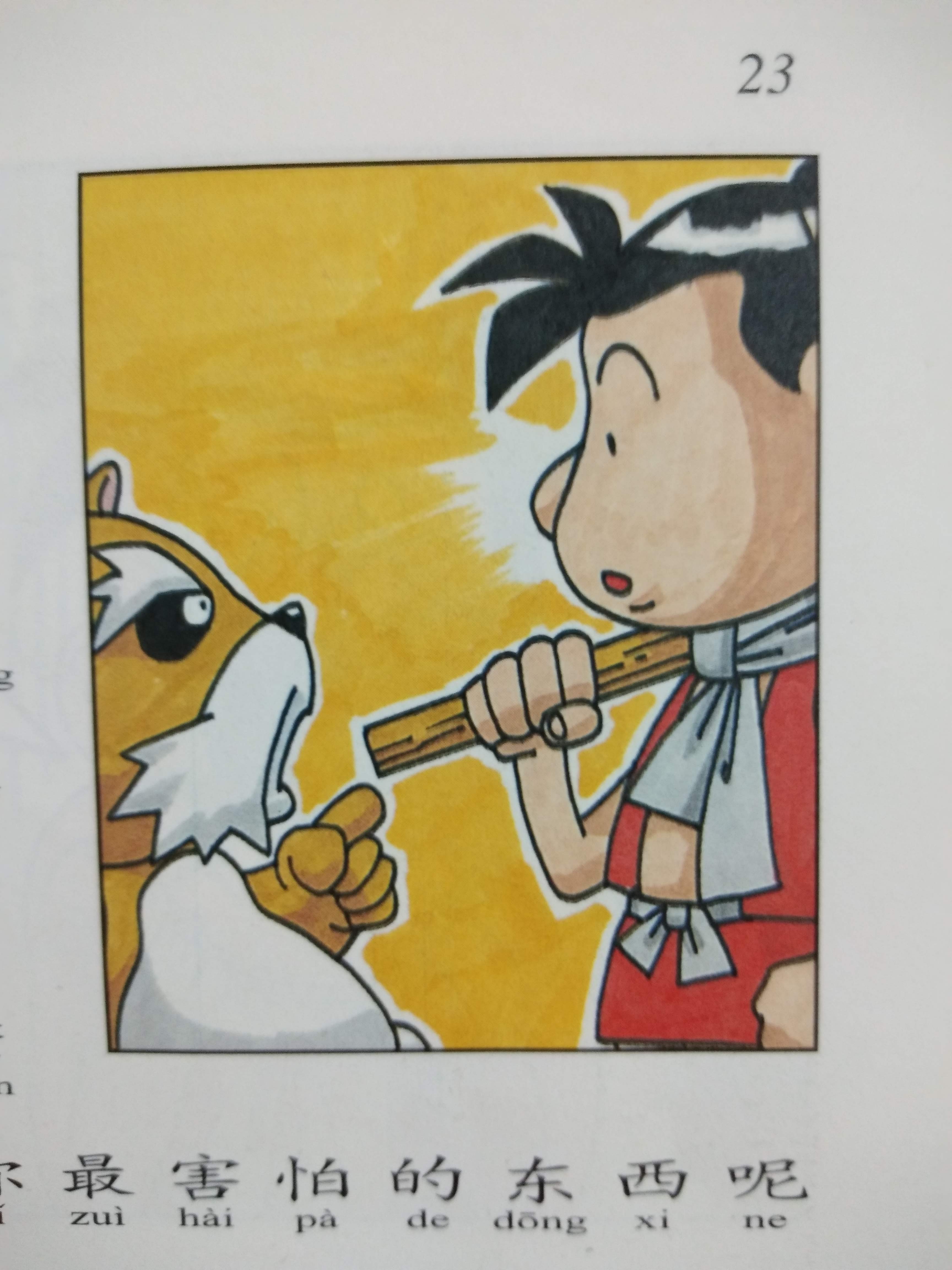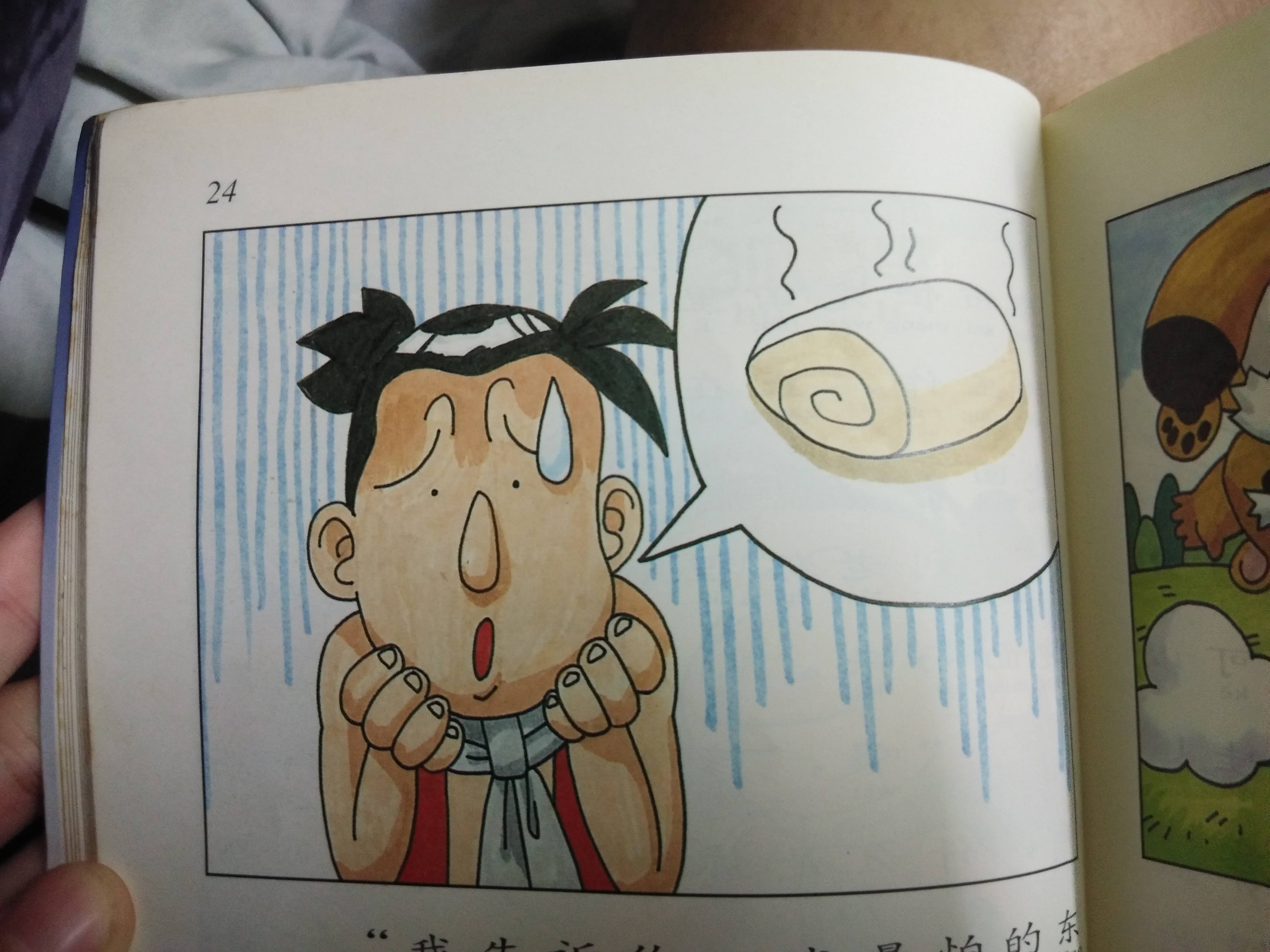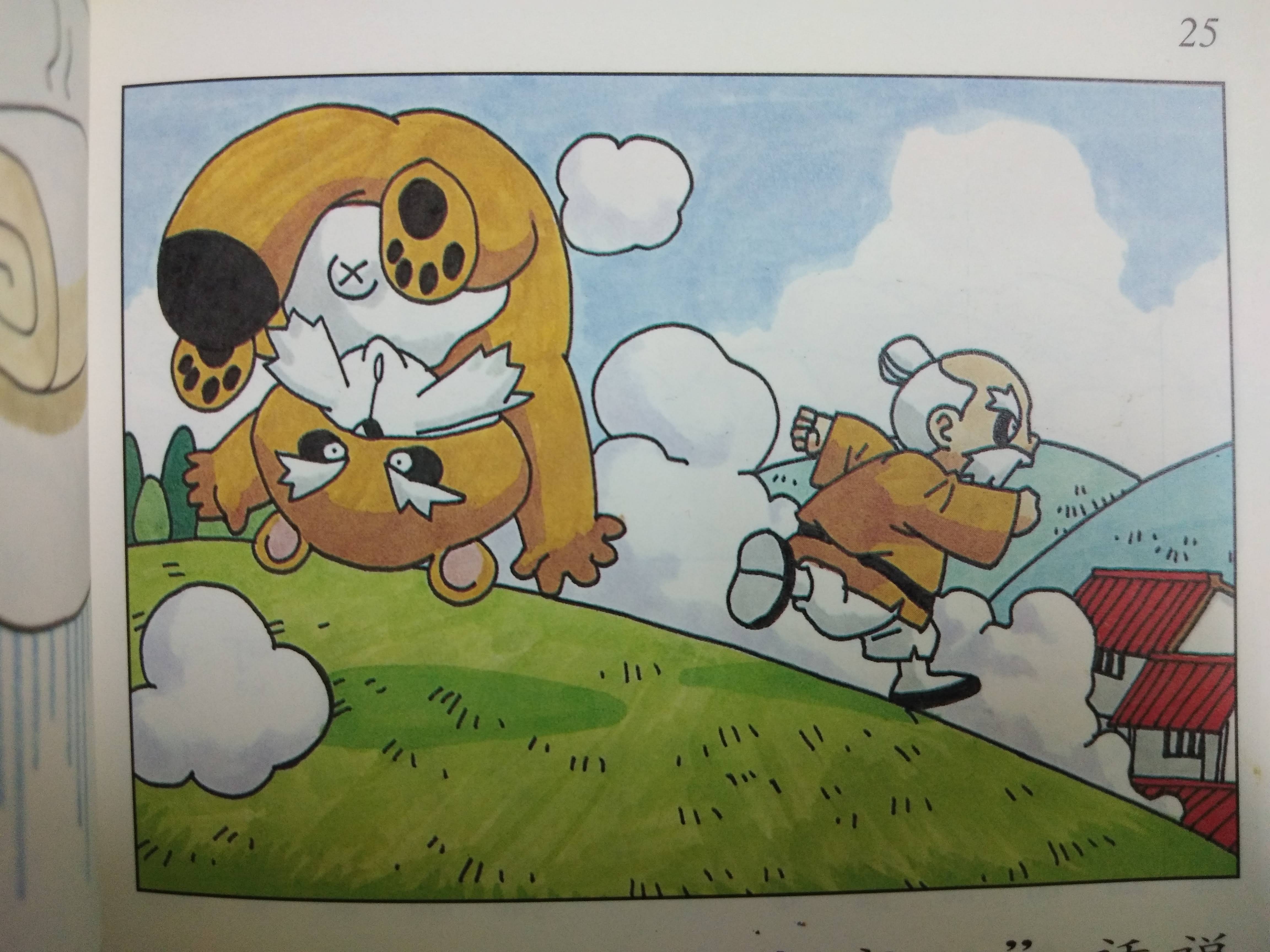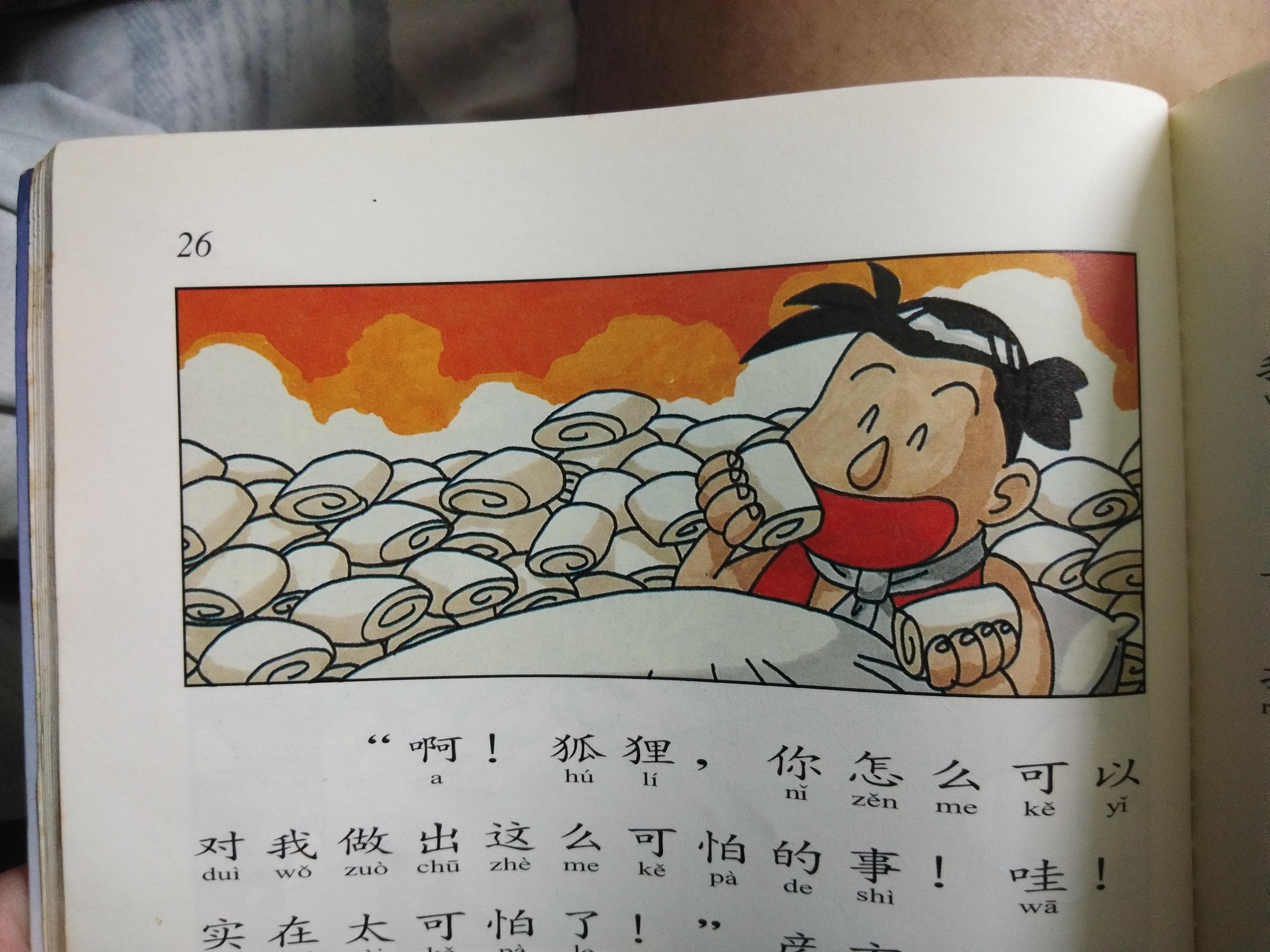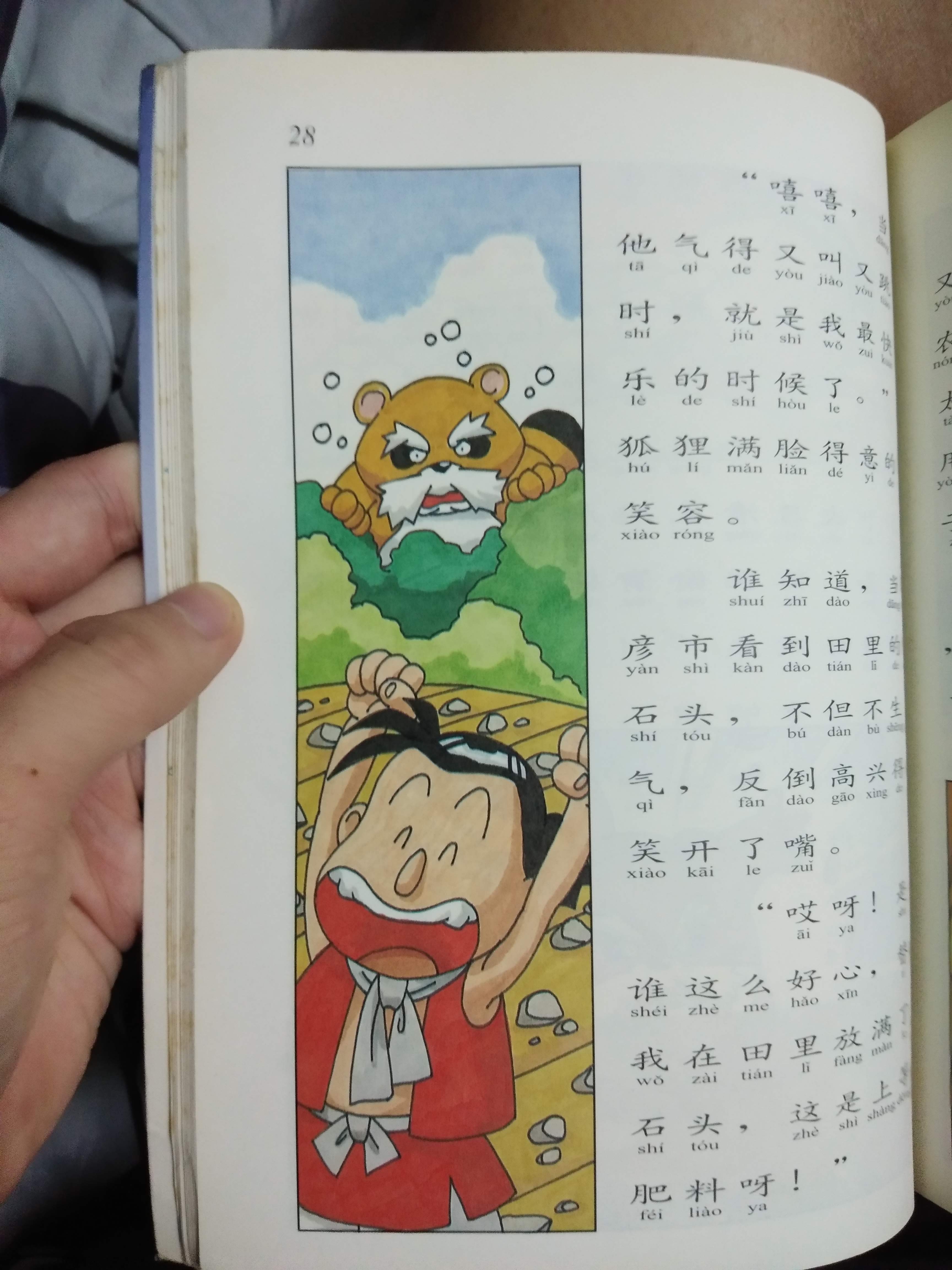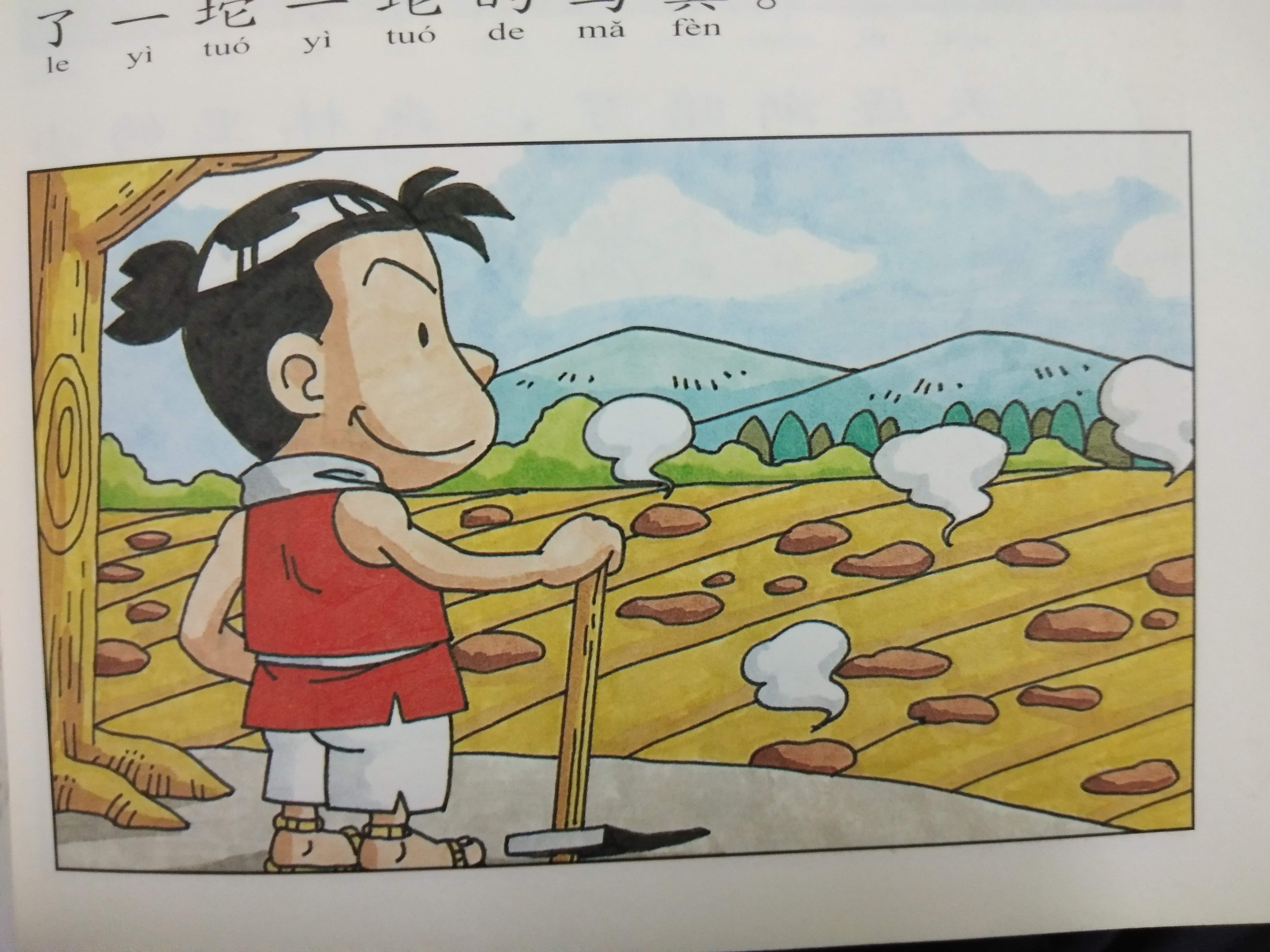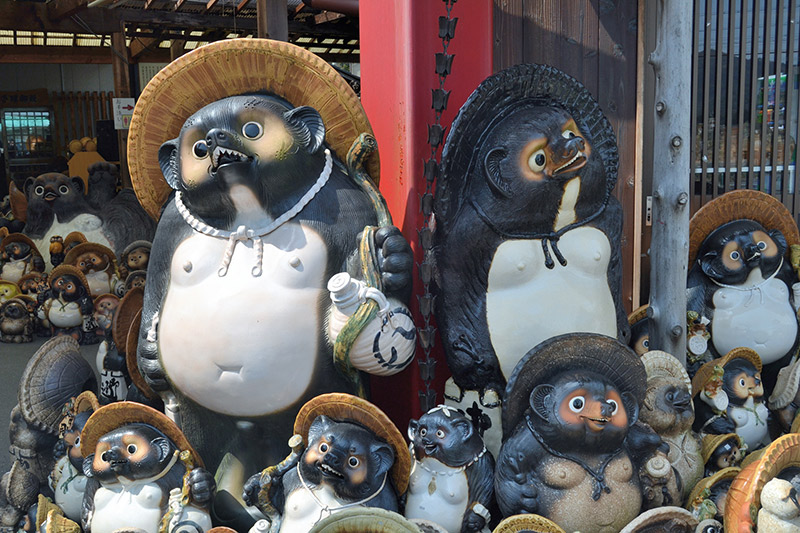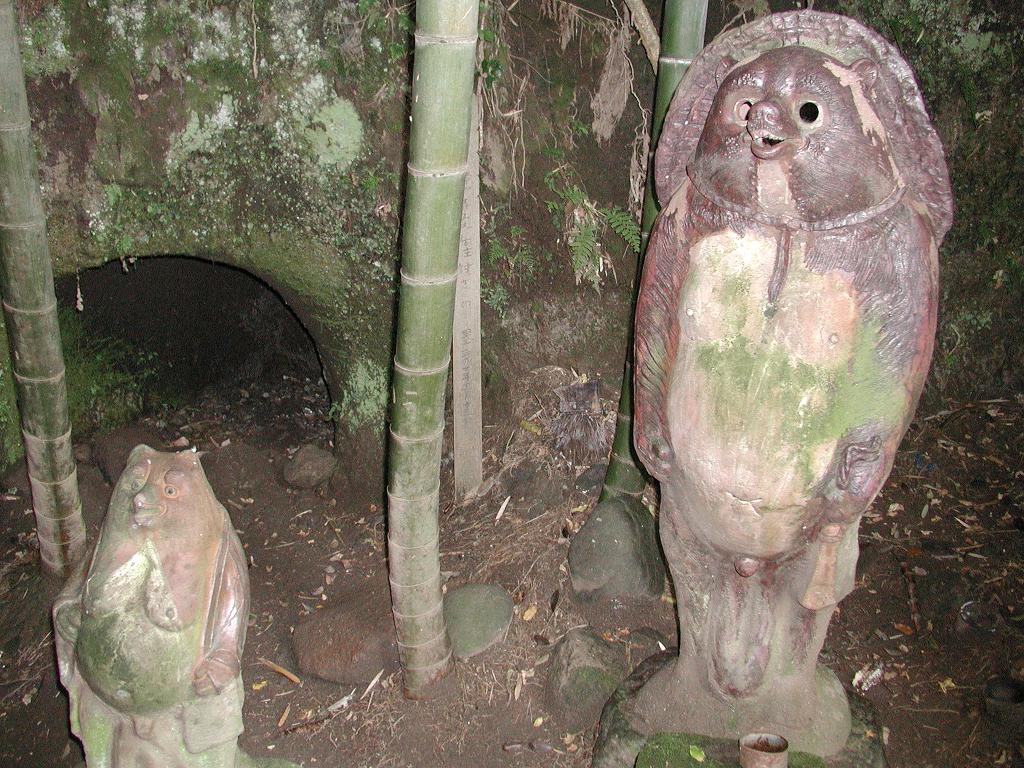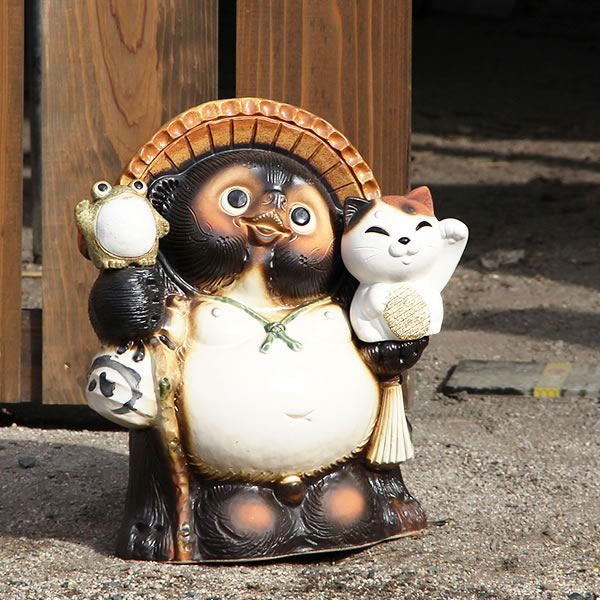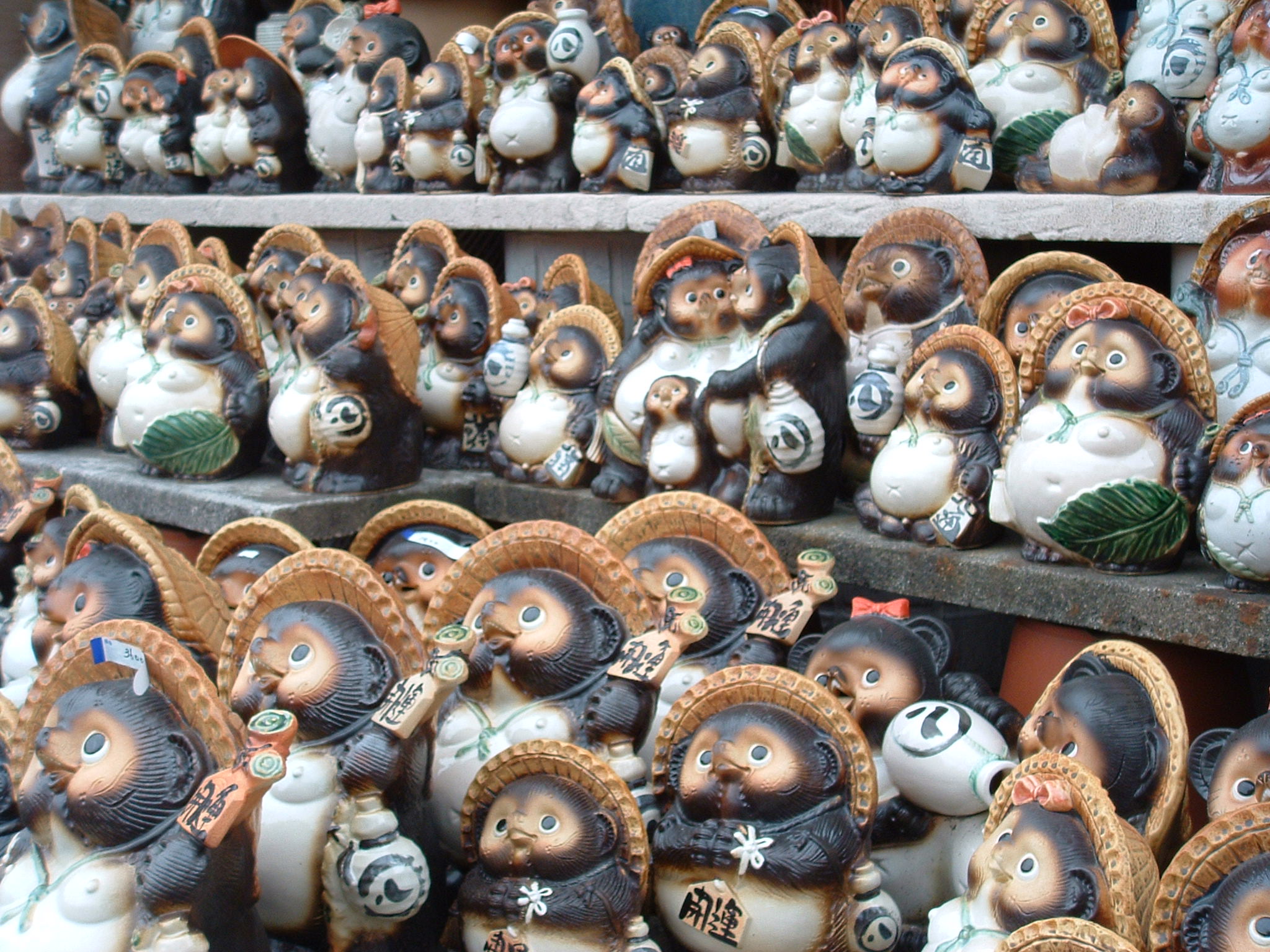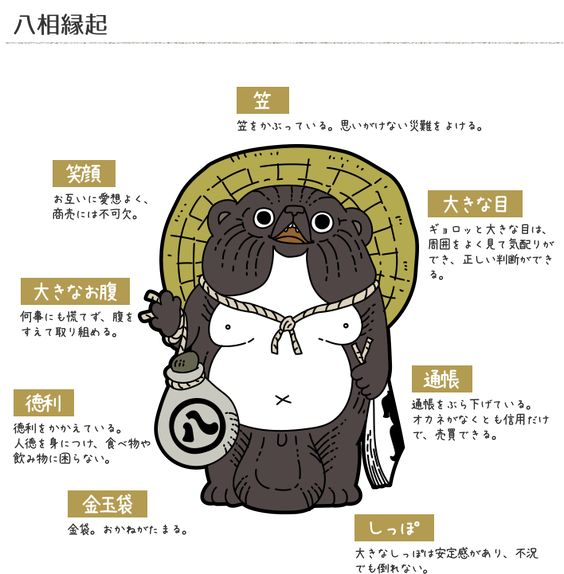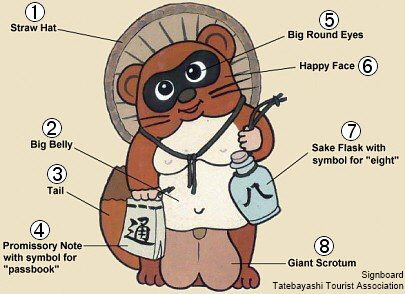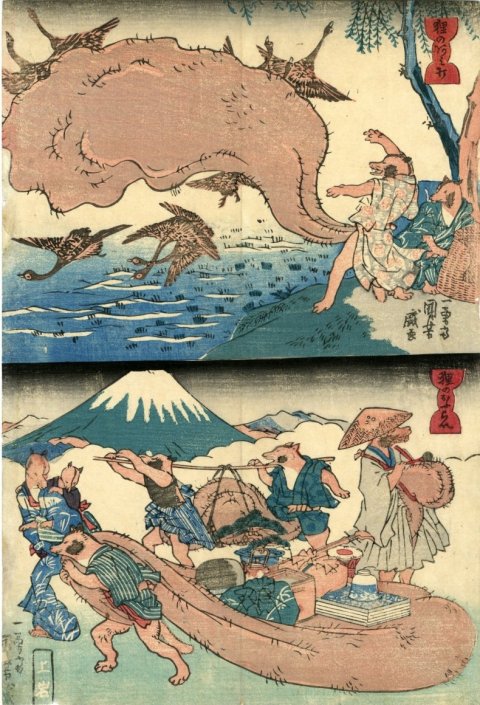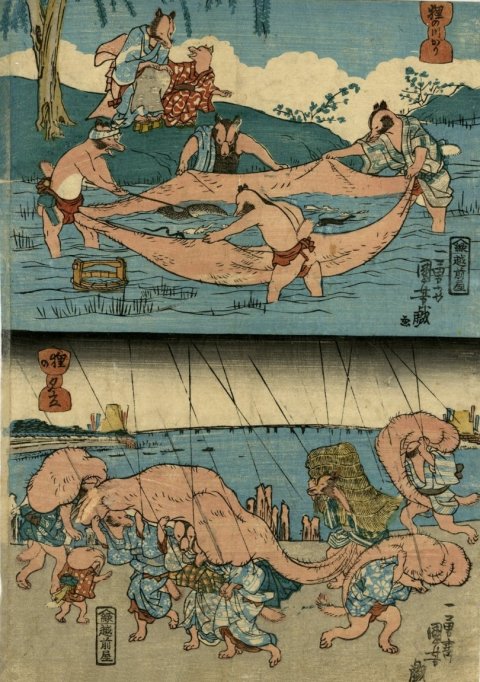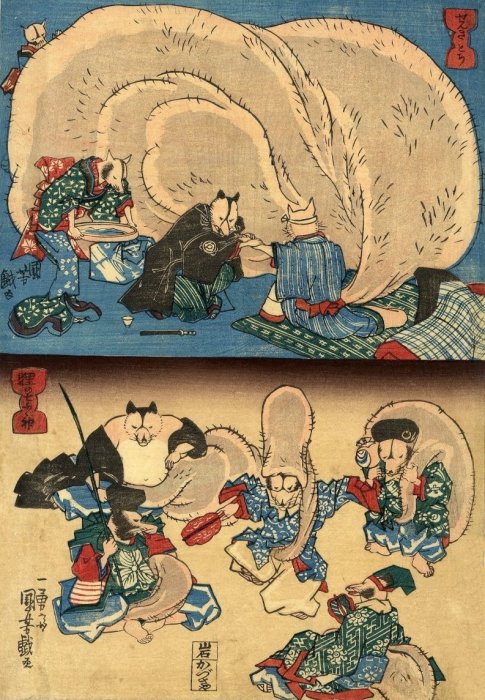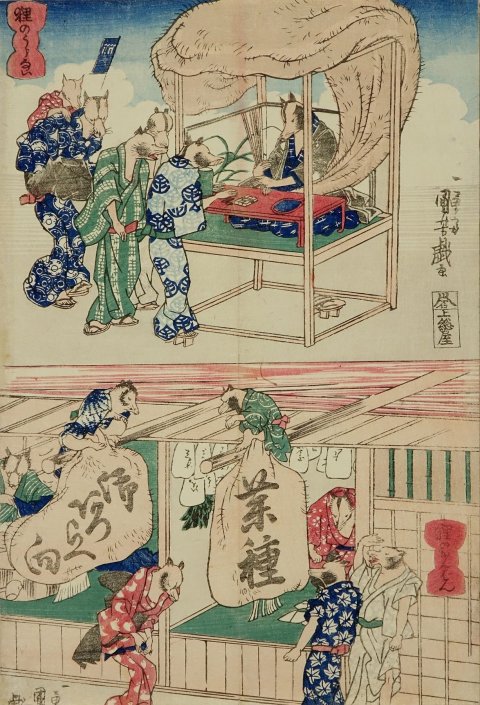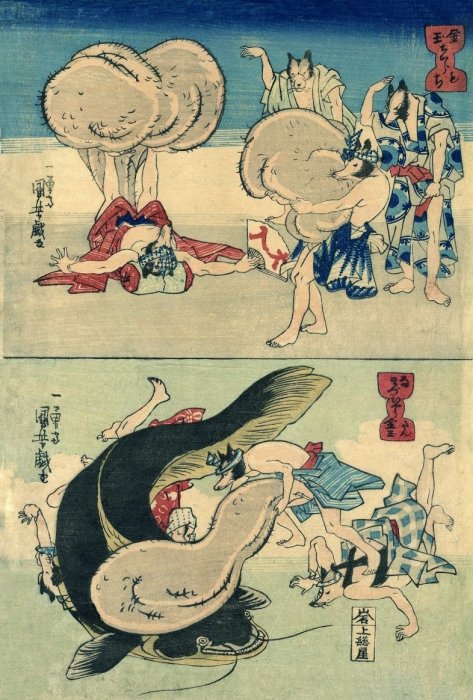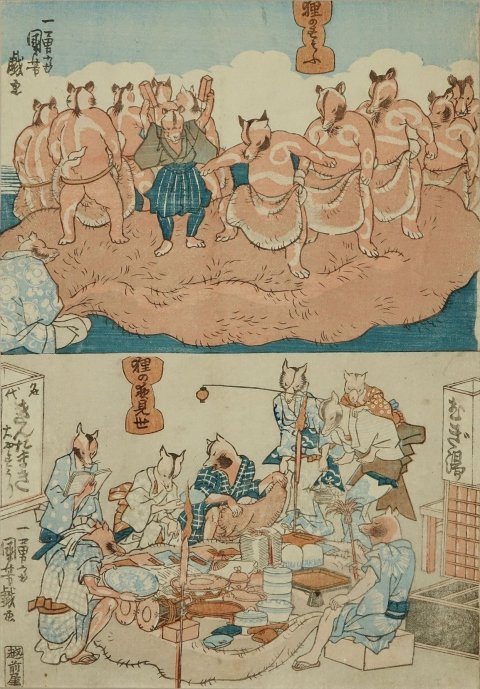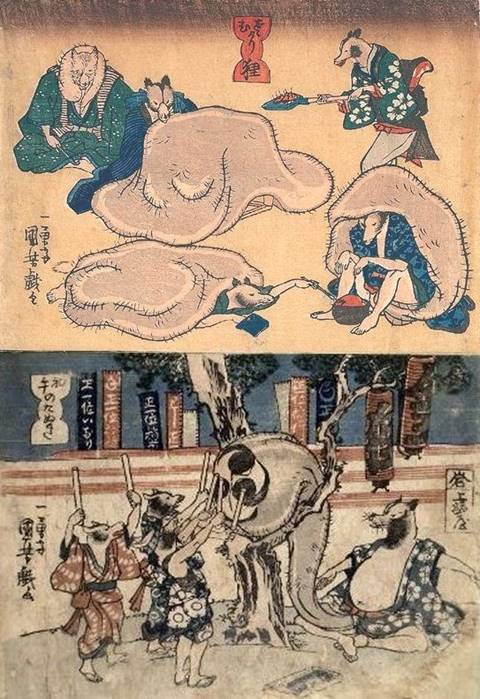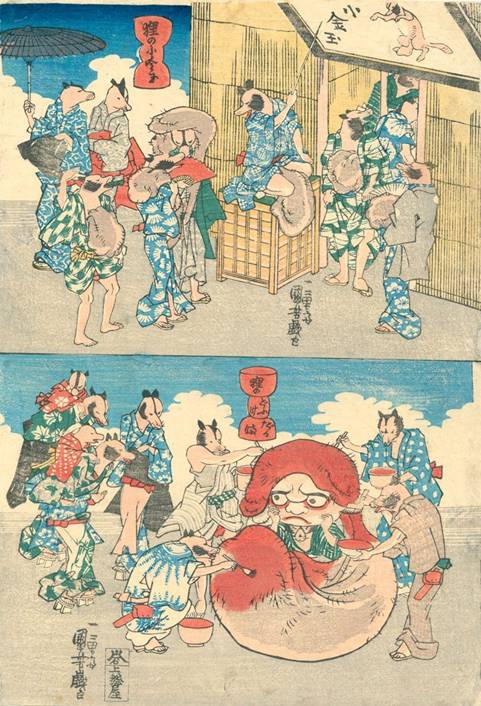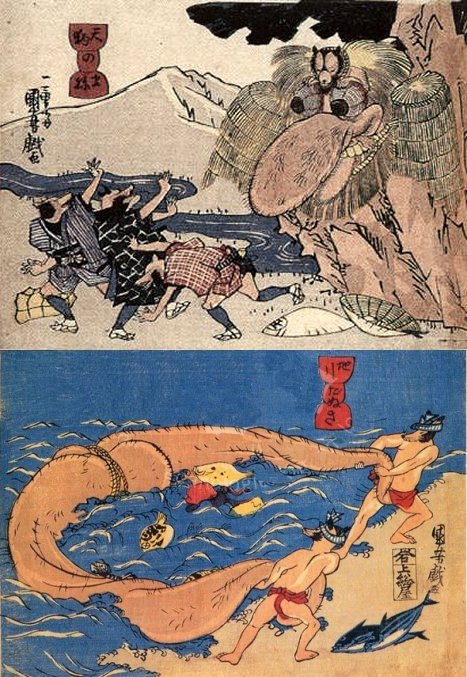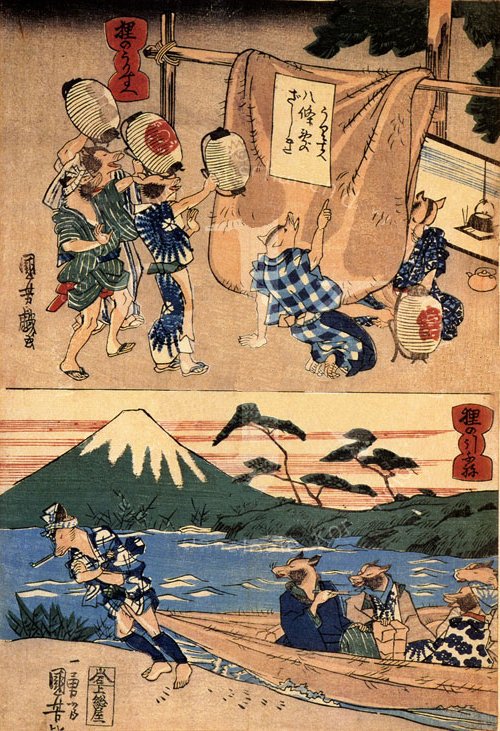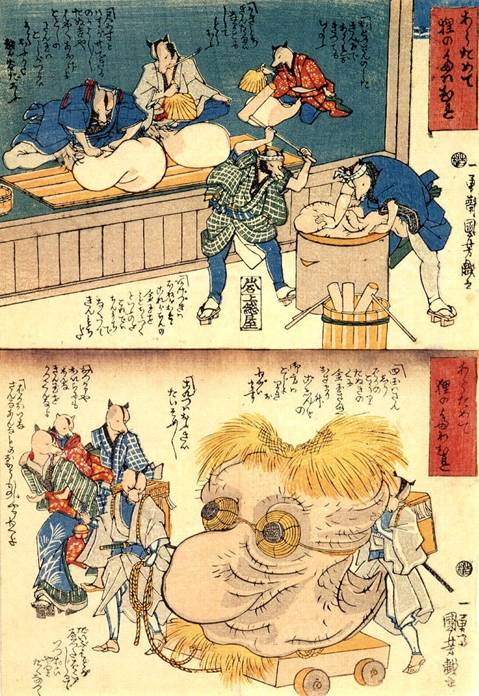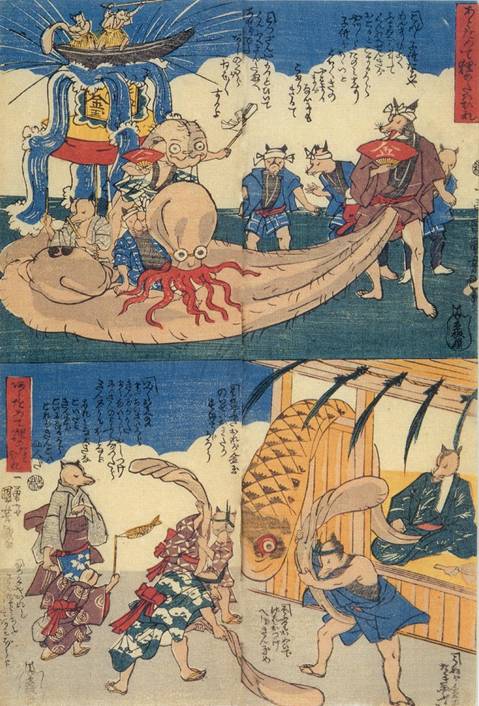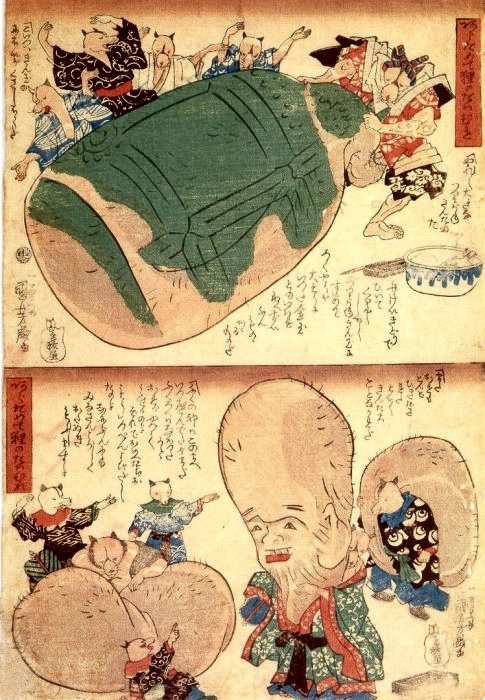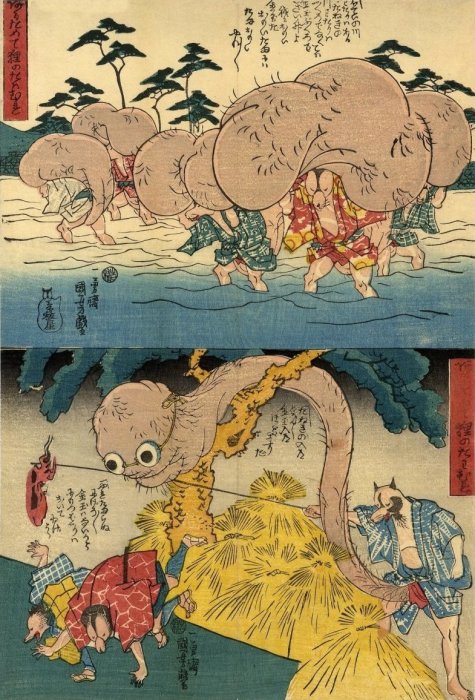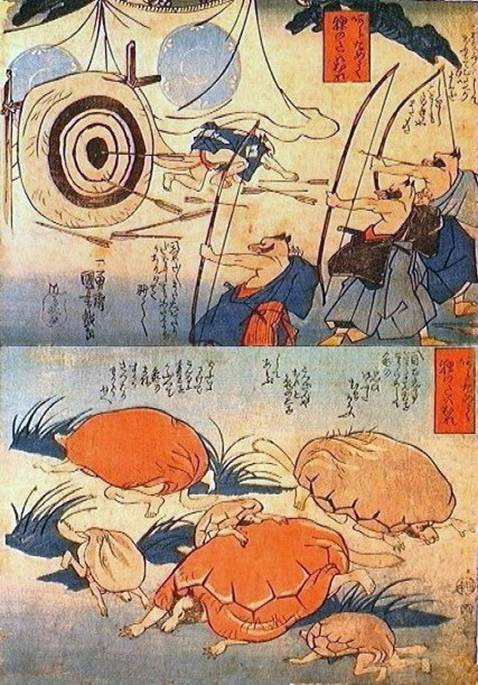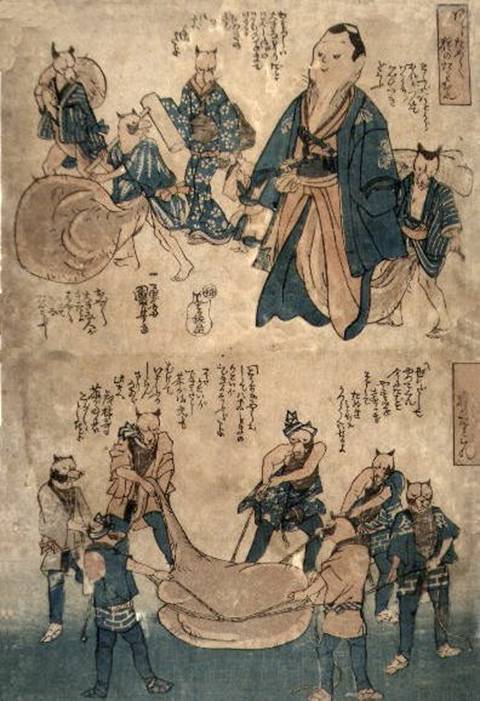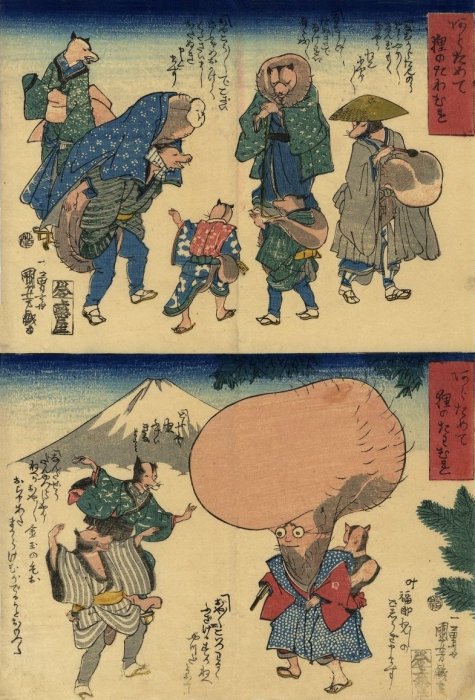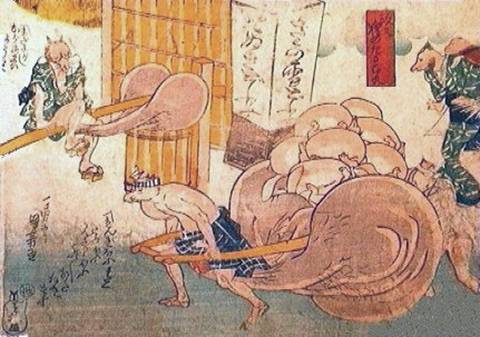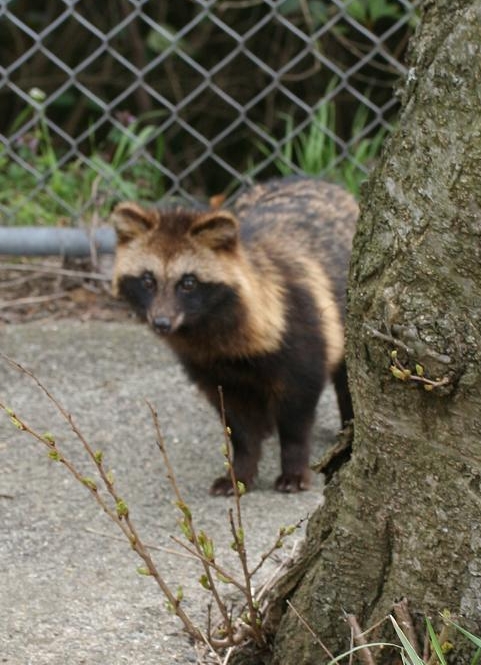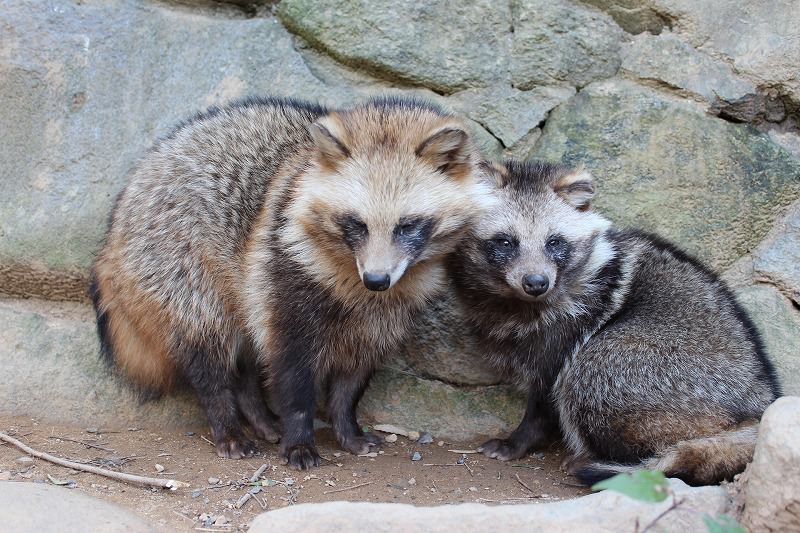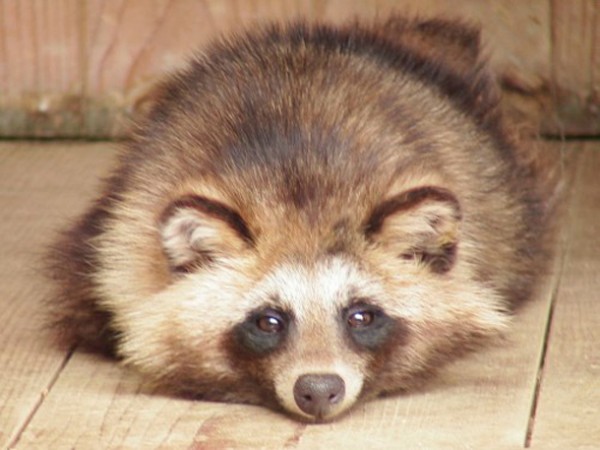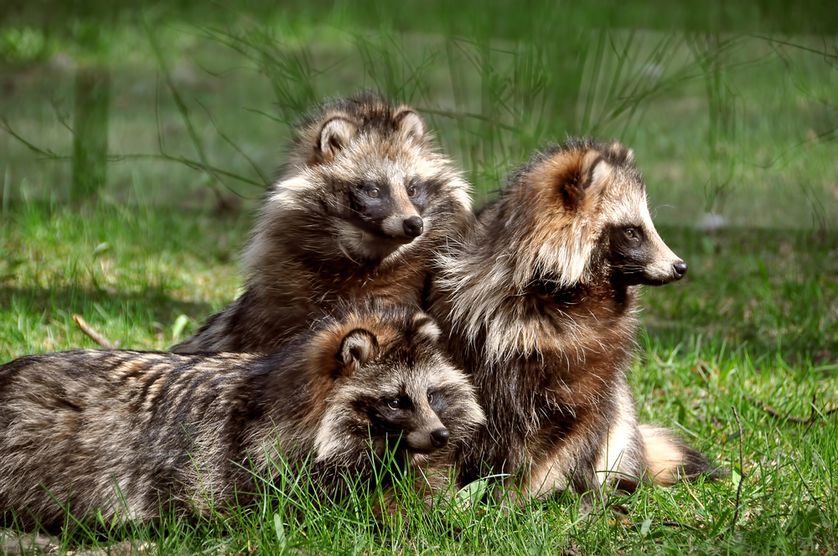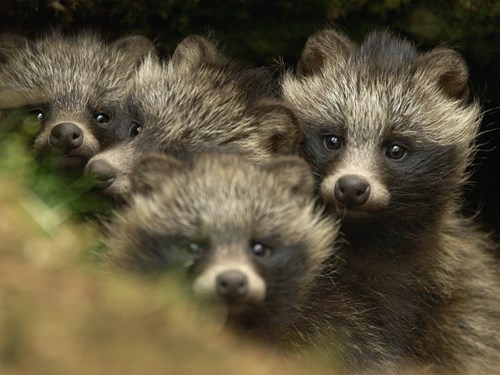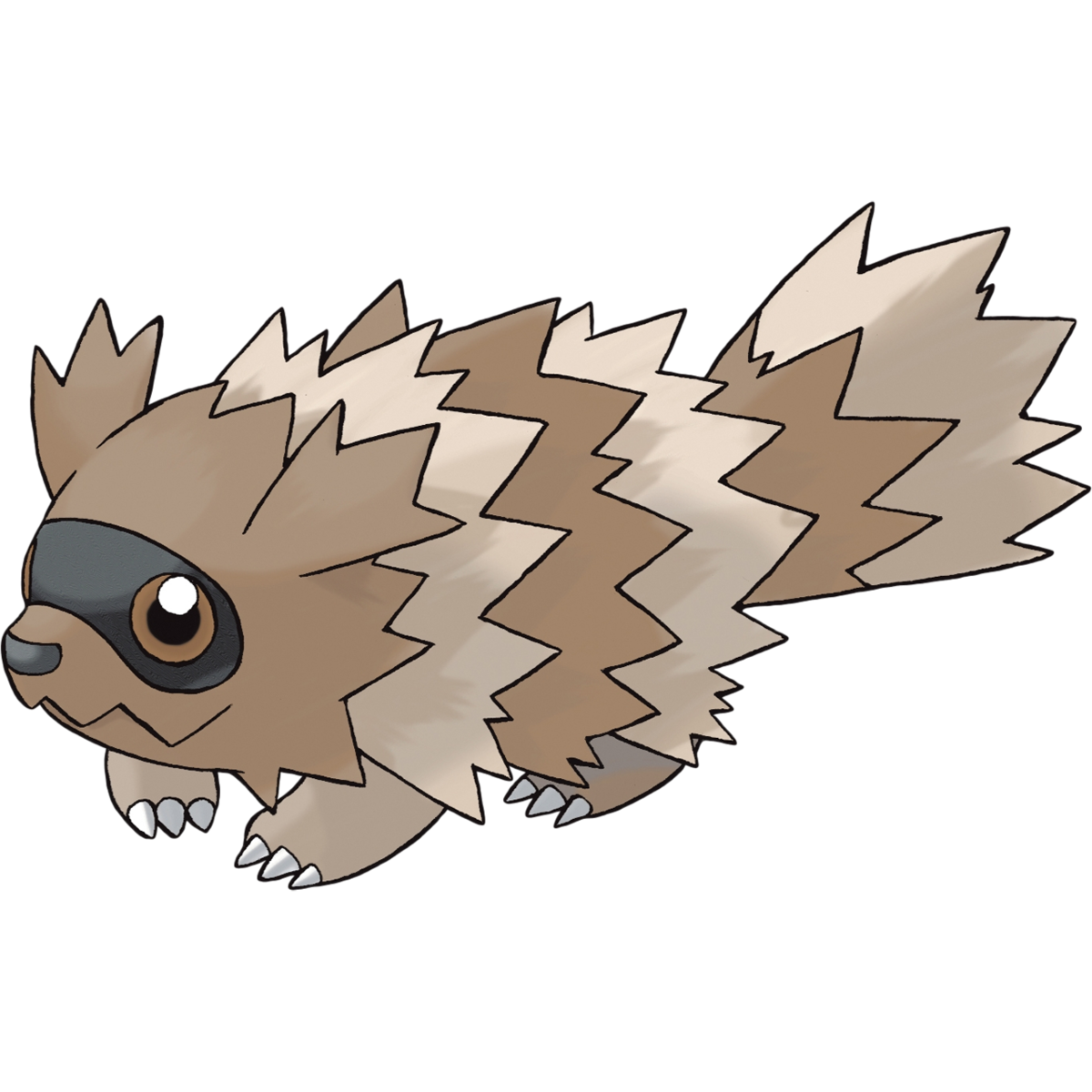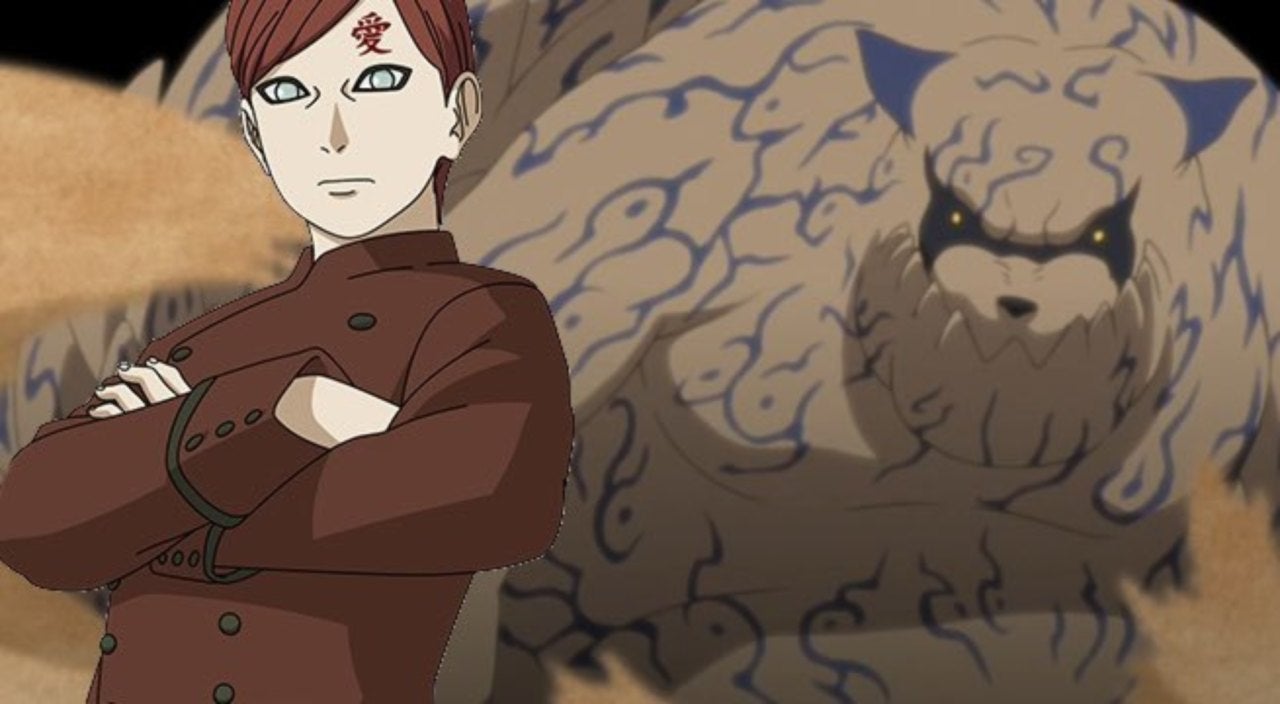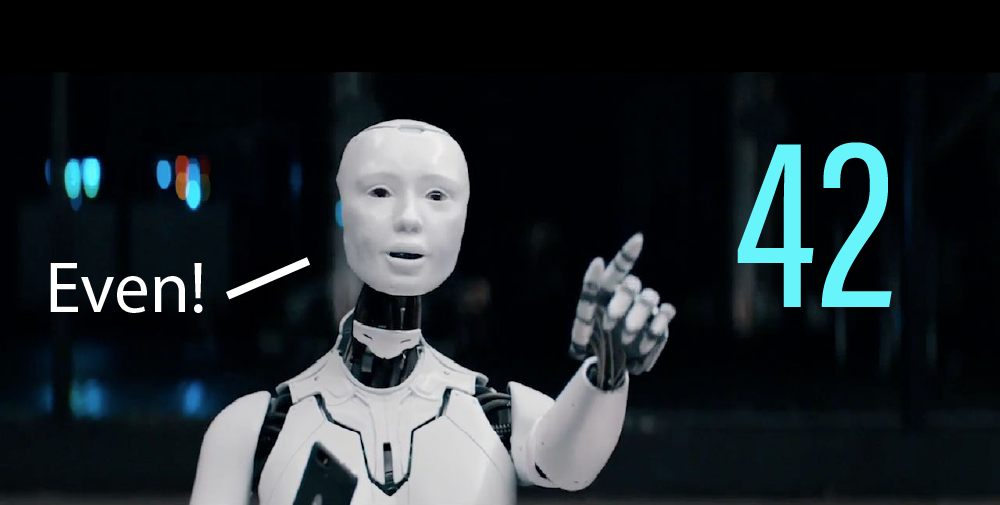If you ever visit Japan, watch out for these creatures. They can shapeshift into anything, perform illusion to trick you, and worst of all, they might use their magical ballsack to attack you!
The Odd Statues in Kyoto
During my trip to Japan, I spotted this peculiar creature all around Kyoto. I saw one just outside of my Airbnb homestay, guarding the house like a gnome. They also comes in group, like the ones I saw at a train station in Kameoka. They look like some sort of owl-headed bear, with a big fat belly, wearing a farmer hat. What I didn’t notice at the time, was the fact they had another prominent feature, BIG BALLSACKS! More on that later.
So What are These Mysterious Creature?
“What are these creatures?” I asked myself when I first saw it. But I was quickly distracted by other things. While I was scrolling through the pictures back in Malaysia, I noticed these odd statues again, so I decided to find out the mystery behind these statues. It was difficult to Google something without knowing its name, but alas, I typed in “Kameoka Station statue” and out comes the answer.
Tanuki - A Semi-Mythical Creature
The creatures I saw are called tanuki (たぬき) in Japan, or Japanese Raccoon Dog in English, and 貉 or sometimes 狸猫 in Mandarin. It is featured prominently in Japanese folktales and legends. Tanuki or more accurately bake-danuki (化け狸) (roughly translate to shapeshifting tanuki) has shapeshifting ability, and they like to trick people by changing into people and various objects. It is considered a yokai 妖怪 (supernatural creatures), along with the likes of kappa and tengu.
Kitsune (fox) is another creature that had the shapeshifting ability, but there is a saying in Japanese 「狐七化け狸八化け」which roughly translates to “Fox has seven forms, and tanuki has eight forms”, which shows the superior shapeshifting skill of a tanuki. Unlike a fox, which is usually more serious, a tanuki possesses a more mischievous trait, often trick people for the heck of it. Tanuki and fox were once considered as the same animal, and tanuki inherited the trickster trait from the fox folklore, which the Japanese were influenced by the Chinese. The word 狐狸 (hú li) refers to a fox in Mandarin, but it is pronounced kori in Japanese, and refers to all sorts of supernatural and troublesome occurrences, with tanuki and fox as the culprit. Tanuki is also also known as mujina in a certain region, but it mostly means badger. The whole thing is a mess that I won’t get into.
Tanuki often uses leaves as a tool to assist them in their trickery. Tanuki will put a leaf on their head, before transforming. They will also buy things with money that will turn into leaves after they’re long gone.
Tanuki Legends
Now that you’re acquainted with a tanuki, it’s time for some tales about tanuki. There are many folktales and legends about tanuki, ranging from creepy ones, funny ones and ones with a moral lesson.
There is a creepy legend in Miyoshi, where tanuki will lure people to hang themselves. The story roughly goes that a lady convinced her lover to both hang themselves, for their parents doesn’t approve of their relationship. They both hung on the tree as promised, the lady dies, but the man’s feet touched the ground as the tree branch snapped and his feet reached the ground. Some passerby saved the men and they found out that the woman was a tanuki all along, and the real lady is still alive. You can read the story here and here. I might have misread the story, as I merely rely on Google Translate to translate the story. Feel free to correct me if I’m wrong.
In another story, a farmer named Hikoichi successfully counter the tanuki tricks, by tricking the tanuki into giving him a lot of steamed buns and fertilizing his farm. He told the tanuki his greatest fear is steamed buns, and it would be awful to have horse shit on his patch of a farm. The tanuki ended up supplying him with many steamed buns, and fertilize his farm with horse shit, all for free. I have read this tail in a book that I’m fond of during my childhood, and the pictures are shown.
Other tales include a story of tanuki shapeshifting into a kettle, challenge each other in their prowess of shapeshifting, drumming their bellies to scare people and more.
Origin of the Tanuki Statues
With tanuki’s reputation as a trickster in Japanese folklore, why did they get made into a statue that acre popular across Japan? And why did they look different from their classic depiction in the legends?
Most of the tanuki statues found around Japan are Shigaraki-yaki (信楽焼), a type of ceramic ware made in the town of Koga in Shiga Prefecture. The town is famous for its kiln, being one of the six ancient kilns in Japan, as well as the ceramic pottery from the kiln. The common tanuki statues found in Japan is designed by Tetsuzo Fujiwara, a potter who moved to the area in 1936 and devoted the rest of his career to tanuki statuary. He “cutified” the tanukis from their evil look to an adorable creature.
How did the statue get popular? In 1951, Emperor Hirohito paid an Imperial visit to the town, the town prepared a special row of flag-waving tanuki statues. Emperor Hirohito was so charmed by this welcome that he wrote a poem about it. The poem goes: “When I was a child, collecting those Raccoon Dog Ornament. Looking at the Shigaraki Raccoon Dog remind me dear days.”
The media wrote about this incident, and the resulting publicity contributed greatly to the popularity of the statues. The whole town is now full of the shigaraki tanuki statues, and it has become a tourist attraction. The tradition has since been passed down to the third generation.
It is common to see some these statues in front of business establishments primarily, shops and restaurants as they’re believed to bring good fortune and wealth. Essentially, they play a similar role to Maneki Neko, the Beckoning Cat, that beckon people to spend generously. It has also been said that Shigaraki ware tanuki became popular among restaurants and shops because the word “tanuki” can mean “excel past the competition” in Japanese depending on the characters used.
The Eight Traits of a Tanuki Statue
The tanuki statues are often depicted with these eight traits, symbolizing its eight virtues:
- The big belly signifies bold and calm decision making.
- The promissory note represents trust and confidence.
- The bottle of sake represents virtue.
- The big tail represents steadiness and strength.
- Oversized scrotum symbolize financial luck.
- Big eyes symbolize the capability to judge the environment and making good decisions.
- The straw hat symbolizes readiness and protection against bad weather (meaning bad times).
- The friendly smile which supposedly means a friendly attitude towards customers.
There is also a traditional interpretation of these eight traits, which I won’t get into, you can read it here. This is one of the main sources of information I used when doing researching tanuki.
Tanuki and Their Magical Ballsack
Now we have reached the most anticipated section, to show you the magical ballsack of tanuki, and explain how and why the legend came to be.
As you can see in these images, tanuki is depicted to use their magical, flexible ballsack for just about anything. From using them as shade, to carry things, as archery target, as a fishing net, as shop signs, as a boat, as a drum and a plethora of other activities and function that you wouldn’t normally use your ballsack to perform.
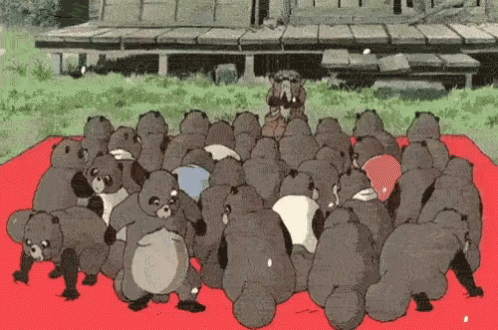
It is said that the ballsack of tanuki can be stretched to the size of eight tatamis. Believe it or not, the exaggerating size of tanuki’s ballsack has nothing to with their sex prowess, but rather it means “luck with expanding one’s money and wealth.”
To understand why, we have to look at the Japanese phrase Tanuki no Kintama たぬきの金玉. In Japanese, the slang term for testicles in Japanese is kintama (金玉), which translates literally as “golden” (金 kin) and “balls” (玉 tama). In Japan, large testicle (more precisely, the scrotum/ballsack) is considered symbolizes wealth and prosperity. Another saying for scrotum is Kinbukuro 金袋, or “money bags”, and having larger scrotum means having larger money bag.
The legend of tanuki’s gigantic and malleable ballsack begins in the Kanazawa prefecture. The goldsmiths in Kanazawa would wrap malleable gold in animal skin and pound it until it turns into thin sheets. It was said that gold is so malleable, and tanuki skin so strong, that even a small piece of gold could be thinned to the size of eight tatami mats, which is about 12 sq. meters. Some people got confused about what is being stretched, and the artist played around with the idea of a stretchy scrotum, and thus, the legend is born.
The Real Tanuki
So how is a tanuki like in real life? Tanuki is known as Japanese raccoon dog, but don’t let the name fool you, it is closer to a fox than a dog or a raccoon. However, they share the common trait of being a member of the canine family.
Although a nocturnal animal, tanuki can be found active during the day time. They are omnivorous and can eat anything, ranging from fruits and berries to small animals like frogs and rodents.
Tanuki is also one of the rare species in the mammalian family to live livelong in pairs. It is estimated only 3-4% mammals does this. The male tanuki will hunt and feed the pregnant tanuki, as any good husband would. They are also one of the few members of the Canid family to hibernate over the winter season.
Although belonging to the canine family, they don’t bark, but rather produce a noise that sounds like squeaking, whining or whimpering sound you hear a dog make.
You might be wondering, do tanuki really have big and magical ballsack? Yes, and no. Yes, male tanuki with large scrotum are more likely to attract female and have a greater chance of getting their genes into the next generation. But their scrotum are not magical like in the folklore.
Here is a video of Aichan, a pet tanuki. Pretty adorable if you ask me.
Tanuki in Popular Culture
Being such a popular animal in Japan, it’s not hard to find tanuki in popular culture. Ghibli Studio’s Pom Poko, which is produced by Hayao Miyazaki is a movie that is centered around a group of tanuki, and their struggle to survive in the modern world as mankind expands into their territory for modern development. In one scene, a group of tanukis even attack humans with their magical ballsack. Watching the movie is a great way to learn about tanuki in Japanese folktales and culture in general. I will definitely recommend anyone to watch it. Though be warned, there are a lot of tanuki testicles in the movie.

In some Mario games, Mario can obtain a Tanooki Suit that allows Mario to transformed into an invulnerable Jizō statue (Jizō is another topic I wanted to do for my blog post, stay tuned). In Mario & Luigi: Superstar Saga, a Tanoomba (a combination of Goomba and Tanuki) can be found as enemies in the game. One of their attacks involved shapeshifting into one of the Mario bros and attack them. Here’s a footage of Tanoomba here.
Zigzagoon from Pokémon is possibly inspired by tanuki and raccoon, which is often confused to be the same animal.
In Naruto, one of the nine-tailed beasts Shukaku is a tanuki, and the plot of this beast is related to Bunbuku Chagama, a Japanese folktale about a tanuki that uses its shape-shifting powers to reward an old man who rescued it for his kindness.
End words

What started as my curiosity turns into a cultural lesson for me and this post took me to research and write. I hope you enjoy this post and have learned a thing or two about this unique creature, as well as some Japanese culture.
Read More

I’ve tried to cover as much tanuki facts as possible, especially its role in Japanese culture. I may have left out some details and if you want to learn more, you can go through the source material I’ve listed below. Onmark Productions deserves a special mention for the amount of detailed information provided.
- http://www.onmarkproductions.com/html/tanuki.shtml
- https://baike.baidu.com/item/%E7%8B%B8/18397639
- https://en.wikipedia.org/wiki/Japanese_raccoon_dog#In_popular_culture
- https://www.zhihu.com/question/54530226/answer/522369670
- https://ja.wikipedia.org/wiki/%E5%8C%96%E3%81%91%E7%8B%B8
- https://zh.wikipedia.org/wiki/%E5%8C%96%E7%8B%B8
- https://www.tokyocreative.com/articles/20140-tanuki-real-and-magical
- http://lifeinjapanjason.blogspot.com/2011/07/tanuki-in-japanese-culture.html
- https://www.pinterest.com/pin/177540410295389229
- https://minwa.fujipan.co.jp/area/kumamoto_001
- https://io9.gizmodo.com/the-animal-with-the-most-legendary-testicles-in-the-wor-1694222408
- https://www.tokyocreative.com/sights/6471-shigaraki-tanuki-village
- http://loveartlab.me/2015/05/20/the-raccoon-dog-ornament-is-a-lucky-charm
- https://nirc.nanzan-u.ac.jp/nfile/1404
- http://gakkenmu.jp/column/8813
- https://okab.exblog.jp/26997452
- http://shop.shigaraki-labo.co.jp/html/page3.html
- https://www.atlasobscura.com/articles/the-tanuki-japan-s-trickster-god
- https://traditionalkyoto.com/culture/figures/badgers
- https://en.wikipedia.org/wiki/Shigaraki_ware
- https://zhuanlan.zhihu.com/p/27522927
- https://omamorifromjapan.blogspot.com/2011/11/hikoichi-from-kumamoto.html
- https://folklorethursday.com/legends/tanuki-mischief-magic-and-change-in-the-japanese-countryside
- https://animals.net/tanuki
- http://kuniyoshiproject.com/raccoon%20Dogs%20(R209).htm
